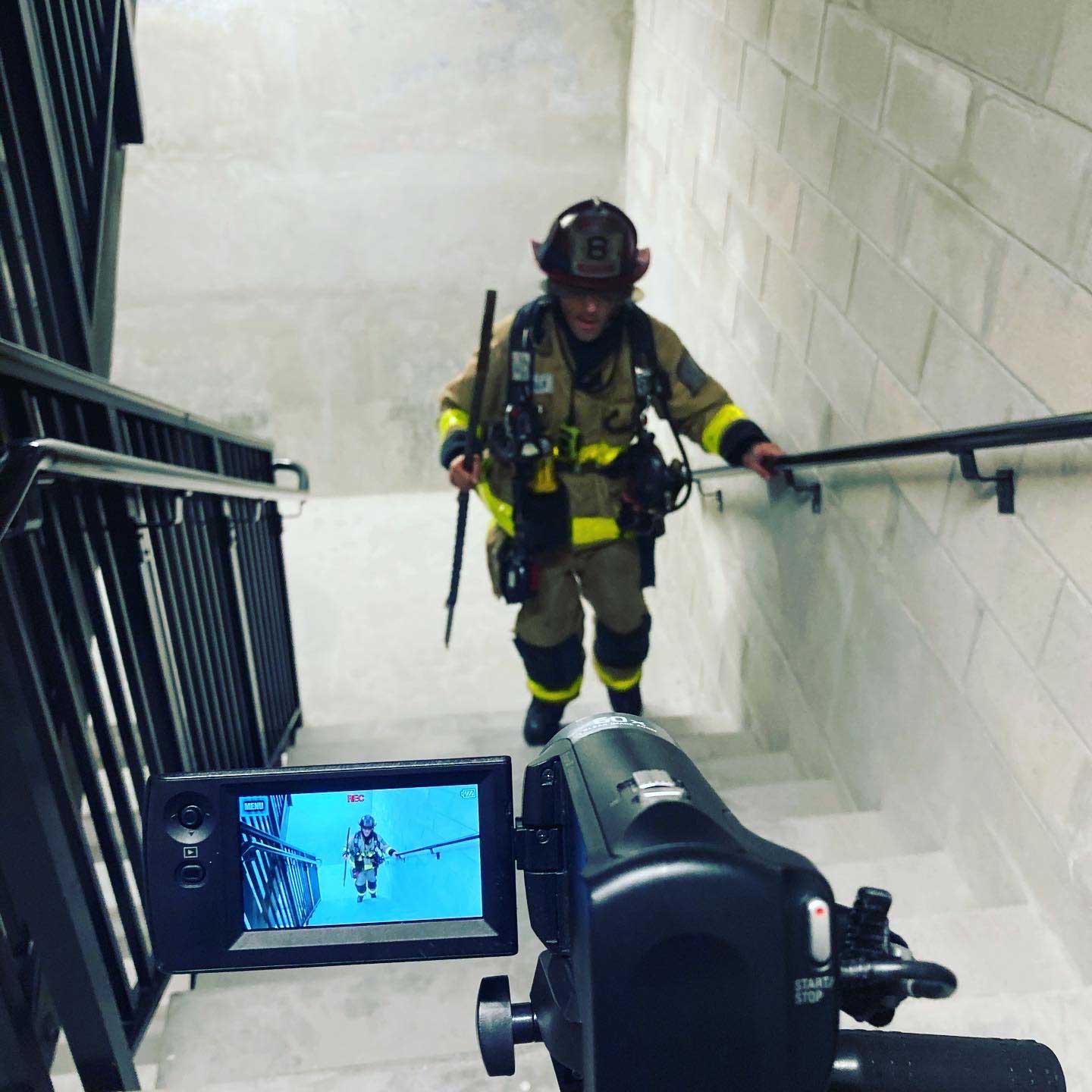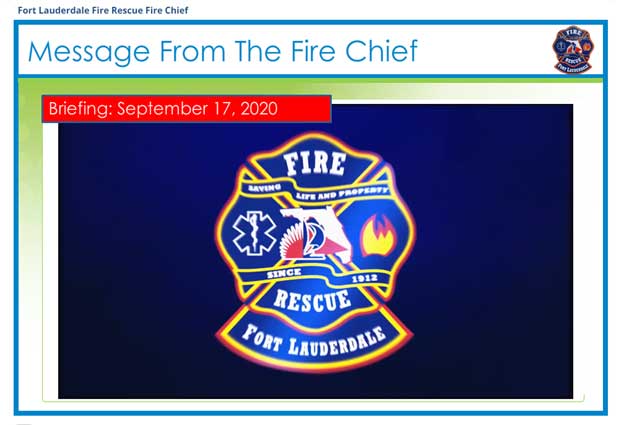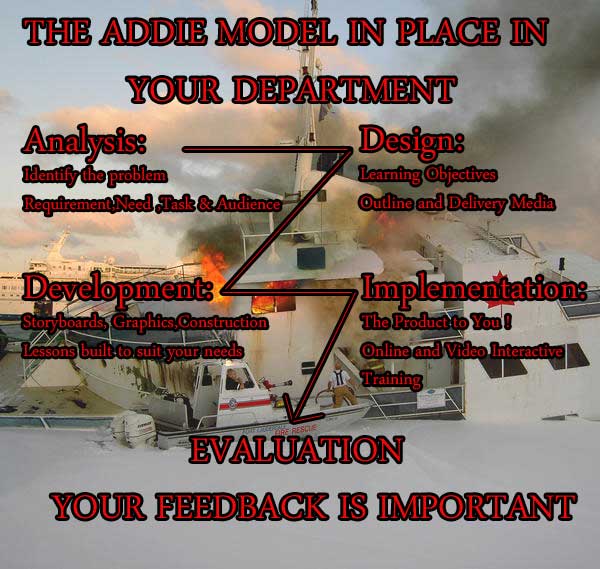

By Freddie Batista
As a longtime fire and emergency medical services instructor and a pioneer in eLearning, I understand the financial challenges your department may be going through especially now due to the COVID-19 pandemic. The need for 24-hour access to training material or the value of gaining additional knowledge from experienced fire service instructors and subject matter experts can easily be accessed from the comfort of your living room/firehouse. Indeed, you and I can make your training both accessible and affordable though your very own online eLearning portal.
Fire department training has now evolved. The coronavirus has caused the inability to send personnel to conferences or out-of-state training. Fire departments need to look at another avenue to help them facilitate their training. Several learning management systems (LMSs) exist, but which one works right for your department?
We have all been to trade shows and have seen what many companies have to offer, but is the training they are providing useful for your department? All the platforms out there will make it easy to deliver and track the course material that your training bureau puts out there. COVID-19 came into our lives as if a light switch that had suddenly been flipped on; instead of one light being turned out in our department, however, it turned on several. Meetings are now held via virtual conference software, and doctor appointments and eLearning training have finally evolved and been implemented by government, corporate, and children’s education centers. No more excuses! It has been out for over a decade, but the key thing is to understand what technology your department really needs. eLearning was once a “nice-to-have” product but now it has turned into a “must-have” service for your department, primarily for the health and safety of your firefighters.
RELATED FIREFIGHTER TRAINING
Freddie Batista: E-Learning in the Fire Service Industry
E-Learning: Choosing the Right Learning Management System
The bottom line is that all these LMSs are pretty much the same. They all store, track, and help facilitate the delivery of content. Every fire department’s training division has several courses already tailor made around your department’s standard operating procedures. This is especially true in an emergency medical services-type of fire department, where your protocols differ from neighboring agencies. The same courses that now offer continuing education can be created and approved by your medical director and uploaded for online delivery.
In the fire service, courses must be created around what we call a “hybrid” or “blended” training environment. The hands-on portion half can be done in an open lot facility and the other half in the classroom online or what we call in eLearning a virtual classroom (Adobe Connect, DesignersX.com, or Zoom.) This is where retention increases dramatically. A course designed with a social learning environment increases retention to 75 percent; it increases to 90 percent once a practice section is included. The classroom-based portion can be delivered online followed by a hands-on approach with the student/firefighter; this will put more emphasis on the hands-on portion of the training program. Get your people to think; always include open ended-type questions and scenarios and get students to explore areas in which they may be unsure. The “what if” method is important because we all know anything can happen during real-life events.
The COVID-19 crisis caught the departments off guard, but it does not have to derail the training within your department. Choosing the right LMS with the right virtual classroom is a must. Have a realistic budget and identify must-have features as well as the right support services to assist with the functionality of the purchased tools. How do we choose the right technology? Although eLearning is not new—it has been around now for more than a decade—the platforms and technology have evolved. What has been tested by your employees? Have they taken degree programs online? Getting their feedback as well as feedback from adjacent departments can assist in making the right decision. What are they using? What have they used previously and why don’t they use it anymore? This will allow you to see what they like best and least about current programs. What are their virtual classroom expectations? Are there any activities or tools they need to boost workplace performance? IT department feedback can help you add items to the expense sheet and choose an LMS and virtual classroom that aligns with their needs. For example, members may expect simulations and branching scenarios that suit different online training styles. In this case, you need a virtual classroom LMS that supports more interactivity and real-world application. Do not settle for the LMS tailored to our industry. Find an LMS that works and tailor it to your needs. Go online and search for the top LMS and virtual classroom software by searching for the top 2020 LMS and Virtual Classroom software’s out on the market today.
So thinks you should ask: Which LMS delivers the top value for your dollar as well as the ability to have a virtual classroom? The best cost-effective way to compare virtual classroom software is to compare them with the top LMS lists. Examine the LMS features that stand out from the crowd based on a specific case. For example, compare the “best value for money/ROI” list has a pricing scenario and perceived usefulness scores compared to the features of the platforms. You can also visit the vendor’s site or read more about their company profile. Who is using their platform? Has someone used them and changed their mind? Does the LMS provide the essential features you need?
Here are a few of the LMS features:
- It’s 100-percent browser-based for the learner and the administrator—no plug-ins required!
- It offers three types of user registration: open, approval, or manual.
- It publishes SCORM courses.
- It offers a multilevel course catalog.
- It launches and tracks courses.
- The LMS keeps track of bookmarks, scores, and results of individual questions.
- It provides online reports.
- It fully supports SCORM.
- It places learners in groups or cohorts or by shifts.
- It will assign courses to all members, specific personnel or assignments, and newly registered rookies.
- It provides assorted themes to match your department with logos, and so on.
- It’s easy to install. Runs on Windows, IIS, and SQL servers.
- It is a customizable and PHP-based if needed.
LMS benefits include the following:
- Provides immediate access to training.
- There’s no training lag time for new employees.
- Deliver new product training on time, memos statement, and so on.
- Reduces delivery costs per course.
- Get more value from the training budget.
- Provide training to more fire rescue personnel.
- Gives personnel more time to do their job.
- Reduce training-related travel and training.
- Students can fit self-paced training into downtime.
- Delivers training with greater consistency.
Compare Platforms Side by Side. Some exclusive LMS directories also have a comparison tool so you can evaluate their features and functionality. You can choose up to then virtual classroom LMS platforms at a time. Then assess their main selling points, product overviews, and pricing options immediately. You can often visit their listing or request a free quote directly from the comparison page.
The key feature that is needed due to this epidemic and the evolution of training is the virtual classroom, which minimizes firefighters’ physical exposure to others and allows them to get training from a distance. They do not have to give up real- time support or one-on-one interactions because the LMS has all the collaborative tools they need to succeed, even if the coronavirus pandemic derails your current face-to-face, instructor-led training. In fact, you probably will not switch back to traditional training once you reap the rewards of virtual classroom software. Not only does it benefit your bottom line but also brings higher ranks in administration back into the fold. Members do not have to feel isolated from the department simply because they are geographically dispersed.
The key thing to remember is that there are several LMS out there, but don’t just settle on an LMS because of its fire-related content; the content can be added by your own department. Doing so will limit your options. Once you decide which LMS and virtual classroom you want to use, contact them for a free consultation.
Time is short and due to this epidemic; you need to find the best LMS and virtual classroom training software as soon as possible. So, why not get a free consultation to receive a personalized list of recommendations? Just provide some basic information about your department and online training requirements. Experienced LMS consultants will compile a list of the top solutions that align with your training needs. So, what questions can I ask? Here are a few important and notable perks of a virtual classroom LMS versus the traditional instructor-led training (ILT) to face the COVID-19 crisis.
Launch A Remote and Risk-Free Training Program, Due to the global pandemic, social distancing is the new norm. This makes it challenging to gather your team in one location for on-site training. Fortunately, virtual classroom software allows you to host remote virtual ILT (VILT) sessions that minimize the risk of virus transmission. You do not have to worry about employees maintaining a two-meter distance or properly sanitizing the location before they arrive because all the training takes place in a virtual classroom environment. Another bonus is not having to wear gloves or masks, which is the new dress code within the departments.
Virtual 24/7 Peer Support. ILT gives employees the opportunity to interact with instructors and peers. But that stops when they leave the on-site session. On the other hand, a virtual classroom LMS facilitates anytime-anywhere support. Peers can help each other identify performance-limiting behaviors and overcome work-related challenges from afar. Best of all, they can address issues on the spot instead of waiting until the next ILT event, where they perhaps have forgotten about the problem or it is no longer be relevant.

Improved Flexibility. The best virtual classroom software makes it quick and convenient to train. Employees attend synchronous events from the comfort of their station or homes. They can also participate in self-guided courses whenever it fits into their schedule. Virtual classrooms are more flexible and adaptable, and not just for your employees; instructors, firefighters, officers, and chiefs do not have to travel either. They can simply log in to the LMS and share their expertise. No more booking flights, worrying about hotel accommodations, or spacing chairs to reduce COVID-19 risks.

Enhance Personalization. Your online training program should be personalized, regardless of the global situation, but it is even more important during the coronavirus crisis because employees need to know how the training relates to practical job duties. A virtual classroom LMS enhances personalization because every employee gets targeted support tools. They are also enrolled in VILT sessions that relate to job tasks and responsibilities, as well as compliance policies and protocols to stay safe in the workplace. In contrast, ILT is typically one-size-fits-all. Employees attend the same workshops or presentations, regardless of their roles, given that there’s simply not enough time or money for separate training events. The virtual classroom software helps you retain top performers and decrease new hire training costs.

Digital Job Aids. Another perk of virtual classrooms versus ILT is supplementing employee knowledge. You can incorporate digital resources that bridge skill gaps and improve performance behaviors. It does not have to be in the form of comprehensive courses. Something as simple as a two-minute demo or online training tutorial can help staffers identify personal areas for improvement. Instructors can also use these digital job aids in their curriculum, for instance by referring employees to the online training library and provide resource links associated with the content.

Stretch Learning and Development Resources. in this case, resources pertain to training assets and learning and development talent. Virtual classroom software can alleviate workload because everything is centralized. Plus, your training department team does not have to book a venue, print training materials, and deal with travel arrangements. Virtual classrooms also stretch your budget because you can reuse existing assets. For instance, record a VILT session and upload it to the LMS as an online course or repurpose images, video clips, and modules to create a self- paced certification or recertifications course.
Provide Immediate Online Training Feedback. It is difficult for one instructor to teach large groups. As such, many employees do not get crucial one-on-one time. Virtual classroom software facilitates immediate feedback, whether it is from experienced peers, remote instructors, or asynchronous activities. For example, employees can participate in online simulations and branching scenarios that tie into the VILT topic. This is followed by personalized recommendations and performance overviews. Employees get to evaluate their behaviors and decisions right away when the subject matter is still fresh in their minds and there’s time to ask meaningful questions of the instructor.
Retain Top Talent. Employees expect a safe and supportive training environment. Thus, virtual classroom software helps you retain top performers and decrease new hire training costs. Firefighters are more likely to appreciate your organization if you make the learning more engaging, convenient, and flexible, instead of forcing them to attend on- site ILT courses and rearrange their busy schedules. They will also appreciate the fact that your department values staffer well-being. Sure, you must invest in a new LMS and develop VILT content, but that is a small price to pay, knowing that your employees are out of harm’s way. One of the best things about a virtual classroom software within your LMS is that you do not have to choose between ILT and eLearning. You can host VILT sessions to build foundational knowledge, then provide activities tool online via your LMS for remote support and reinforcement. Better still, you can choose the ratio that works best for you; for example, 75 percent of the training may take place in the virtual classroom while the remainder is self-paced modules and microlearning refreshers. Thus it is flexible, adaptable, and cost- effective for every department.

Designing and Development of Training, The ADDIE model must be first put in place before any course is designed or implemented. The ADDIE model acronym stands for the following:
- Analysis. Identify the problem and task the audience.
- Design. This is where learning objectives can be created. There are several resources out there to help you create powerful learning objectives. Blooms Taxonomy is an example of a theory to follow. A learning objective is an outcome statement that captures specifically what knowledge, skills, and attributes students should be able to exhibit following instruction.
- Development. This includes storyboards, graphics, constructions, and the lessons built to suit your needs.
- Implementation. This is the final product/course design—the online video and interactive training.
- Evaluation. This is the feedback you get from the learner which will help you create better courses in the future. Constructive criticisms, just like learning objectives, are theories such as Kirkpatrick that can help you design your final evaluation to get the best out of your feedback.
FREDDIE BATISTA has 22 years with Fort Lauderdale (FL) Fire Rescue. He has been on several teams such as FEMA Task Force 2, Technical Rescue Operations, and the FTLD Dive Rescue Marine Unit. He has been a firefighter for 25 years and held numerous positions in the fire service. He is a longtime advocate for eLearning and has a bachelor’s degree in organizational leadership with an associate degree in fire science technology with Instructor 3 Certification through the state of Florida. He has a master’s degree in executive management with a minor in Instructional system design.

